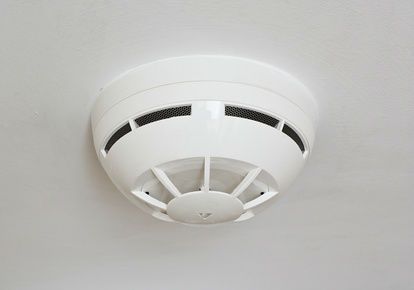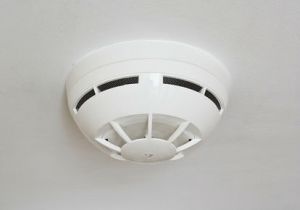
Centuries ago a home was comprised of four walls with a roof. This most-basic structure was thought to be more than enough to keep our earliest ancestors safe and healthy.
Today however, our homes are designed to not only provide shelter, but to be a domicile that protects us from illness and injury. And considering we spend more than half of our lives inside our homes, a healthy home is key to a healthy person.
Yet an overwhelming six million Americans live in homes that actually pose a hazard to their health. Poor ventilation, contaminants, structural damage and leaks are just some of the components of an unhealthy home and are directly related to you and your family’s well-being.
Keep your family both safe and healthy by performing some of these simple home maintenance tasks regularly.
1. Install Alarms. According to the Centers for Disease Control and Prevention (CDC), approximately one in every four homes lacks properly operating smoke alarms. They recommend installing smoke alarms on each floor and in all bedrooms and installing carbon monoxide alarms near every bedroom. Also be sure to check each alarm monthly and change all batteries annually.
2. Check Your Paint. Homes that were built prior to 1978 may contain a lead-based paint. As the paint ages and chips, you risk being exposed to toxins. If you’re unsure, have all of the paint in your home tested and hire a professional to come in and remove it. Don’t attempt this yourself as inhaling the paint can be toxic. And be sure to have all of the paint dust removed safely.
3. Ventilate Properly. Poor ventilation allows for toxins and dangerous molds to build up. In the kitchen be sure the oven fans ventilate outside the home. Those that don’t allow the moisture to remain indoors. Similarly, exhaust fans in the bathroom should be vented outdoors. And open windows regularly to allow for air to circulate throughout the home.
4. Securely Seal. Checking your home regularly for a proper seal will not only keep the heat in but will also keep pests out. Be sure to regularly re-seal areas in the attic, crawl spaces and roof which will prevent both heat and AC losses.
Also check areas around the foundation for rodent or insect damage. Holes or cracks will allow pests to make their way indoors. Avoid using dangerous chemicals and pesticides and instead don’t let them inside in the first place.
Other Safety Tips to Consider:
- Keep medications, cleaning products and other chemicals stored safely and out of reach of children and pets.
- Any carpets should be securely fastened, especially on stairs and use only rubber-bottomed carpets on tile or wood surfaces.
 Set the hot water heater at 120 degrees to prevent burns.
Set the hot water heater at 120 degrees to prevent burns.- Keep access to pools securely locked to prevent little ones from falling in.
- Clean gutters and check the roof for leaks regularly.
- Older homes should be checked for asbestos and lead and all homes should be checked for radon, a naturally occurring gas that can enter through foundation cracks.
-The Alternative Daily
Sources:
http://www.greenandhealthyhomes.org/what-green-healthy-home
http://www.cdc.gov/nceh/lead/publications/final_companion_piece.pdf

